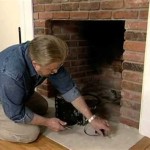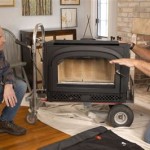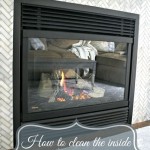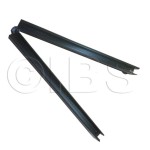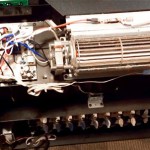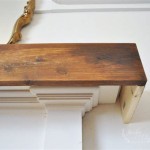Propane Gas Fireplace Stoves: A Comprehensive Guide
Propane gas fireplace stoves offer a convenient and efficient alternative to traditional wood-burning fireplaces. They provide the ambiance of a fire without the labor-intensive tasks associated with wood, such as sourcing, chopping, and storing fuel. This article provides a comprehensive overview of propane gas fireplace stoves, covering their benefits, types, installation considerations, maintenance requirements, and safety protocols.
These stoves are self-contained heating appliances that use propane gas as their primary fuel source. They typically feature a realistic flame display, often enhanced with artificial logs or decorative elements, creating a visually appealing focal point in a room. A key advantage of propane gas fireplace stoves lies in their ease of use; with the simple flick of a switch or press of a button, a fire can be ignited and extinguished, offering unparalleled control over heating schedules and temperature settings.
Propane gas fireplace stoves are popular in both residential and commercial settings. Their adaptability to various architectural styles and their ability to provide zonal heating make them a versatile and practical heating option. Furthermore, advancements in technology have led to the development of energy-efficient models that minimize fuel consumption and reduce environmental impact.
Understanding the Benefits of Propane Gas Fireplace Stoves
Several key benefits contribute to the increasing popularity of propane gas fireplace stoves. These advantages include convenience, efficiency, aesthetics, and environmental considerations.
Convenience: The convenience factor is a significant draw for many homeowners. Unlike wood-burning fireplaces that require constant tending and replenishment of fuel, propane gas fireplace stoves offer effortless operation. They eliminate the need for sourcing, storing, and chopping wood, saving time and physical effort. The instant on/off feature provides immediate heat and eliminates the cleanup associated with wood ash and debris.
Efficiency: Propane gas fireplace stoves can be highly efficient, converting a significant portion of the fuel into usable heat. Many models are equipped with features such as thermostatic controls and programmable timers, allowing for precise temperature regulation and optimized energy consumption. The ability to control the flame height and heat output further enhances efficiency by allowing users to tailor the heat to their specific needs. Moreover, zonal heating capabilities mean that only the occupied spaces need to be heated, potentially reducing overall energy costs compared to central heating systems.
Aesthetics: These stoves are available in a wide range of styles, designs, and finishes, making it easy to find a model that complements any home decor. From traditional cast iron stoves to contemporary minimalist designs, there is a propane gas fireplace stove to suit every aesthetic preference. Realistic artificial logs, glowing embers, and adjustable flame patterns contribute to the authentic fireplace ambiance.
Environmental Considerations: Compared to wood-burning fireplaces, propane gas fireplace stoves produce significantly fewer emissions. Propane is a clean-burning fuel that produces minimal particulate matter, reducing air pollution and improving indoor air quality. While propane combustion does release carbon dioxide, it does so at a lower rate than burning wood. Furthermore, propane is a readily available and domestically produced fuel source.
Exploring Different Types of Propane Gas Fireplace Stoves
Propane gas fireplace stoves are available in several different types, each offering unique features and characteristics. Understanding these variations is essential for selecting the most suitable stove for a particular application.
Direct Vent Stoves: Direct vent stoves are sealed combustion systems that draw air from outside the home for combustion and vent exhaust gases directly outside. This design ensures that no combustion byproducts enter the living space, making them a safe and efficient option. Direct vent stoves are suitable for installation in a variety of locations, as they do not require an existing chimney. They can be vented horizontally through a wall or vertically through the roof.
Vent-Free Stoves: Vent-free stoves, also known as ventless stoves, do not require venting to the exterior. They are designed to burn propane gas completely, producing minimal emissions. However, vent-free stoves require careful consideration of ventilation and safety. They should only be used in well-ventilated spaces and must be equipped with oxygen depletion sensors (ODS) that automatically shut off the gas supply if oxygen levels become too low. Some jurisdictions have restrictions or outright bans on vent-free appliances due to safety concerns. It is crucial to consult local building codes and regulations before installing a vent-free propane gas fireplace stove.
B-Vent Stoves: B-vent stoves, also known as natural vent stoves, require a vertical vent that connects to an existing chimney or approved venting system. They draw combustion air from the room and vent exhaust gases through the chimney. B-vent stoves are less efficient than direct vent stoves because they rely on the existing chimney system to draft the exhaust gases, which can be affected by weather conditions and chimney design. They are also more susceptible to backdrafting, which can introduce harmful combustion byproducts into the living space. Proper chimney inspection and maintenance are essential for the safe operation of B-vent stoves.
Freestanding vs. Insert Stoves: Beyond venting type, stoves are also categorized by their installation method. Freestanding stoves are designed to stand alone on the floor, offering flexibility in placement. Insert stoves, on the other hand, are designed to be installed within an existing fireplace opening. Insert stoves can transform an inefficient wood-burning fireplace into a more efficient and convenient propane gas fireplace.
Installation, Maintenance, and Safety Considerations
Proper installation, regular maintenance, and adherence to safety protocols are crucial for ensuring the safe and efficient operation of propane gas fireplace stoves. These aspects directly impact the performance, longevity, and safety of the appliance.
Installation: Installation of a propane gas fireplace stove should be performed by a qualified and licensed professional. This ensures that the appliance is installed correctly according to manufacturer specifications and local building codes. Proper gas line connections, venting installation, and electrical wiring are essential for safe and efficient operation. A professional installer will also ensure that the stove is properly sized for the space and that adequate clearances are maintained from combustible materials.
Maintenance: Regular maintenance is essential for keeping the stove in optimal working condition. This includes cleaning the burner assembly, inspecting the venting system, and checking the gas connections for leaks. The frequency of maintenance depends on the usage of the stove, but generally, an annual inspection and cleaning are recommended. Cleaning the glass front of the stove regularly will maintain visibility of the flame and enhance the aesthetic appeal. It is crucial to follow the manufacturer's recommendations for maintenance procedures.
Safety: Several safety considerations are paramount when operating a propane gas fireplace stove. Carbon monoxide (CO) detectors should be installed in the home to alert occupants to the presence of this odorless and colorless gas. Regular testing of the CO detectors is essential to ensure they are functioning properly. Never use the stove to burn materials other than propane gas. Keep combustible materials away from the stove to prevent fire hazards. Ensure that children and pets are supervised around the stove to prevent burns or other injuries. Never attempt to repair the stove without proper training and authorization. If any unusual odors, noises, or malfunctions are detected, immediately shut off the gas supply and contact a qualified service technician.
Propane Tank Management: The safe handling and storage of propane tanks are also vital. Tanks should be stored in a well-ventilated area away from direct sunlight and sources of ignition. Regularly inspect the tank and connections for leaks. If a leak is suspected, immediately shut off the gas supply and contact a propane supplier. Follow all local regulations and guidelines for the storage and transportation of propane tanks.
By understanding the benefits, types, installation requirements, maintenance procedures, and safety protocols associated with propane gas fireplace stoves, individuals can make informed decisions about whether this heating option is suitable for their needs and ensure its safe and efficient operation.

Propane Fireplaces Gas Stoves Id Mt Wy Fall River

Freestanding Gas Burning Stoves Sierra Hearth And Home

Propane Freestanding Stoves From Stewart S Hearth In Miramichi
/C34-C-400x225.aspx?strip=all)
C34 Traditional Gas Stove Heater Standing Pilot Regency

Freestanding Gas Stoves Friendly Fires

Fplc Freestanding Stoves Natural Gas And Propane

Freestanding Gas Stoves Stove Fireplaces Napoleon

Fplc Freestanding Stoves Natural Gas And Propane

Natural Gas Propane Freestanding Stoves

Small Stoves Friendly Fires
Related Posts

